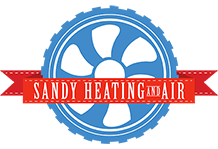If you’re like most Americans, your HVAC knowledge is comprised of understanding the basic functions of your heating and air conditioning, with a sprinkling of insight on the importance of conservation strategies.
However, it’s actually a booming industry that has had incredible growth in the past few years. From technological advances that help you lighten your carbon footprint to a burst of new technicians in the field replacing retiring baby boomers, it’s a hot (and cold!) industry in more ways than one.
For your next trivia night, here are a few HVAC facts to tuck up your sleeve.
For starters, did you know indoor air is five times more polluted than outdoor air, on average? According to the Environmental Protection Agency, 72 trillion allergens enter most homes on a daily basis. Plus, 40 pounds of dust are created in the average American home every year.
The most common pollutants in a home are biological (dander, mold and dust mite droppings), combustion (nitrogen dioxide, carbon monoxide and smoke), and volatile organic compounds or VOCs (gases from paints, dry cleaning chemicals and pesticides).
A Dirty Job!
Your HVAC system is designed to not just heat and cool (that’s the H and A/C part), but also to keep your air quality top notch. That’s the V or vent part of HVAC.
The EPA reports that poor indoor air quality can lead to a number of issues, including respiratory infections, rashes, chronic headaches, asthma, allergies and even lung cancer in severe cases. Maintaining your air ducts helps remove biological contaminants.
You can help by allowing outdoor air to circulate indoors when possible by opening windows and using kitchen/bathroom fans.
The average household spends over $2,000 per year on energy bills. Lowering energy consumption means lowering bills. Since air conditioning and heating are responsible for 44 percent of those bills — nearly half! — maintaining your HVAC system and practicing good conservation habits can make a big difference.
Bonus Facts
Programmable thermostats and smart home devices can save $180 per year alone (but the efforts you exert with these devices are minimal).
According to the EPA, about 18 percent of a home’s energy consumption is used to heat water, so limit shower time and insulate those pipes. Also know that re-cooling a hot home costs more and uses more energy than maintaining a reasonable temperature, so stick with 73 degrees (with a 3-to-6 degree variance depending on personal preference).
Finally, it’s shocking, but 47 percent of homeowners don’t know how much they spend on electricity every month. It’s often lumped into an overall utility bill, and many people rely on automated payments.
Ignorance is not bliss, especially when your HVAC system can be controlled so easily. Contact Sandy Heating & Air Conditioning today to schedule an inspection, or for more tips on how to save energy.

